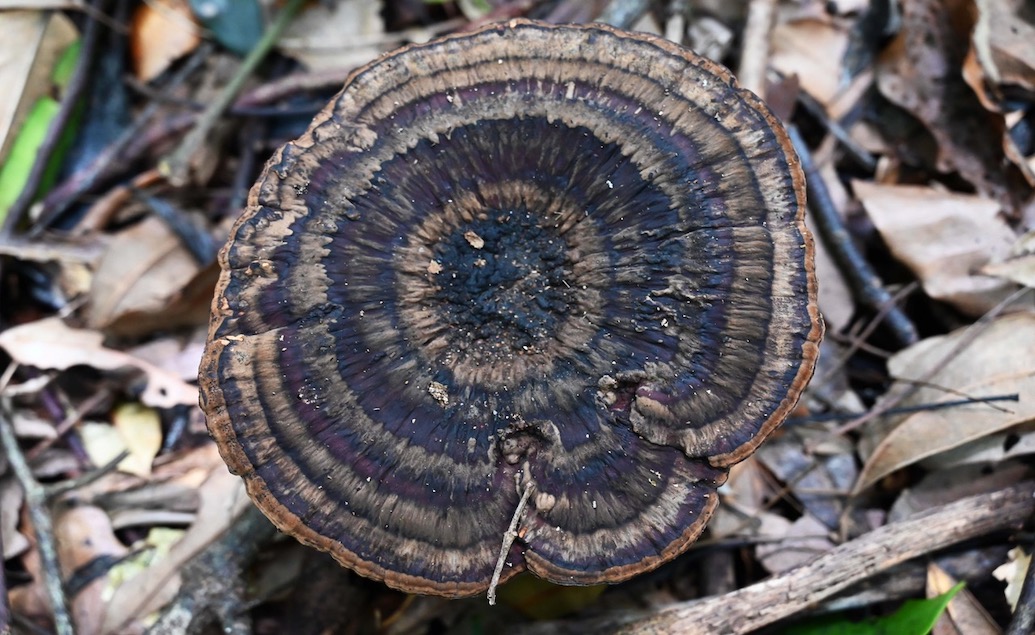A contribution from Big Scrub Landcare Projects Manager, Renee Borrow.
It had been on my wish-list to do for a while, but getting out to our critically endangered lowland subtropical rainforest remnant, Davis Scrub Nature Reserve, near Alstonville, finally became a reality when I decided to ditch the family and go on a solo adventure. Entering the rainforest immediately transported me to what felt like another time, another world, a much-needed step away from the fast-paced world we currently reside in. Surrounded by amazing diversity from the forest floor to the canopy, I was instantly captivated and drawn into the depths of the rainforest.
The walking stick palms (Linospadix monostachyos) were fruiting and it looked like the forest was hanging festive decorations for any who chose to visit. After my initial dodging and weaving (and getting caught amongst) the wait-a-while (Calamus muelleri), I started to adjust my eyes and became adept at avoiding their whippy tendrils that waited patiently for me to stumble into them. I was surrounded by amazing figs, black beans, palms and fat contorted vines that reached into the canopy. Life brimming everywhere….
Venturing further, I started to focus on the smaller details of the rainforest, fallen fruits on the forest floor, tiny plants growing up the tall stems of others, the chittering of passing birds and various fungi residing on rotting logs and branches. I find I have always been drawn to fungi growing within the rainforest environment and the sheer diversity in their colour, shape and size. Given we are only exposed to the above-ground fruiting bodies of these amazing organisms, my mind started to ponder the hidden below-ground extent of each fungi species I came across. These unassuming characters play such an important role in the rainforest, helping to break down dead and decaying wood, recycling organic matter from soil and leaf litter, delivering nutrition to the thriving forest ecosystem. Lost in thought, I contemplated the book I am currently reading, The Hidden Life of Trees by Peter Wohlleben, and the incredible symbiotic relationships built between mycorrhizal fungi and trees. Known as the ‘wood-wide web’, mycorrhizae create vast web-like networks below ground that assist trees with water and nutrient uptake, facilitate communication between neighbouring trees (eg, warning each other of imminent insect attack) and enable healthy trees to share sustenance with young or weakened trees. All this in exchange for some mere sugars on which the mycorrhizal fungi feed – not a bad deal! I’m continually amazed at how interconnected the natural world is…. A good reminder that living in a fragmented and cleared landscape is definitely not normal.
During my time spent at Davis Scrub I photographed 11 different species of fungi and know I’ve only just scratched the surface. I am now on a mission to find and photograph more fungi species across the Big Scrub. While I am definitely no expert in fungi, I think this could become a new-found addiction!


